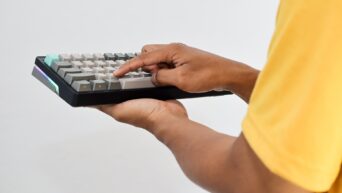Fidgeting is a tell-tale sign that you’re bored or un-interested, but could that technology be used in college lecture rooms in order to better improve the education experience? University of Sussex design student Jade Gidney developed a smart little contraption called Cadence. While it looks like a simple, gray stress ball, it actually does so much more.
At the beginning of the semester, students will be given a Cadence to bring to class so they have something to fidget with if they become distracted or uninterested. The key feature here is that those fidgets will trigger a circuit that reports back to a live-feed for the professor to view. This way, lecturers can get a direct measurement of engagement from their audience based on how many of them are fidgeting versus actually paying attention.
The measurement system works like a stoplight. A green dot on the professor’s laptop indicates there is a low level of fidgeting. An amber signal would indicate that the level is increasing, and a red dot would show the professor that almost everyone is fidgeting. They could then alter their lecture strategy, creating a more interactive experience for the students.
Another useful feature of cadence is that it can be given to students with learning differences. When those kids become anxious or uninterested, they too could fidget, which allows care-takers to know when they might need extra attention.
Fidget spinners were just a mindless distraction, but Gidney wants to continue expanding Cadence in order to better assist with the education process. One day, hopefully, she will release it commercially to aid colleges across the world.
































